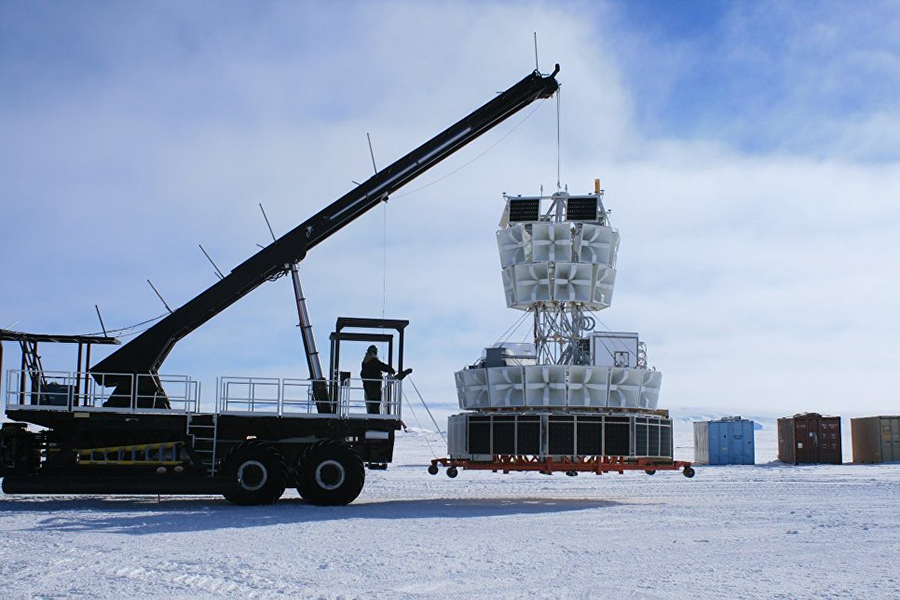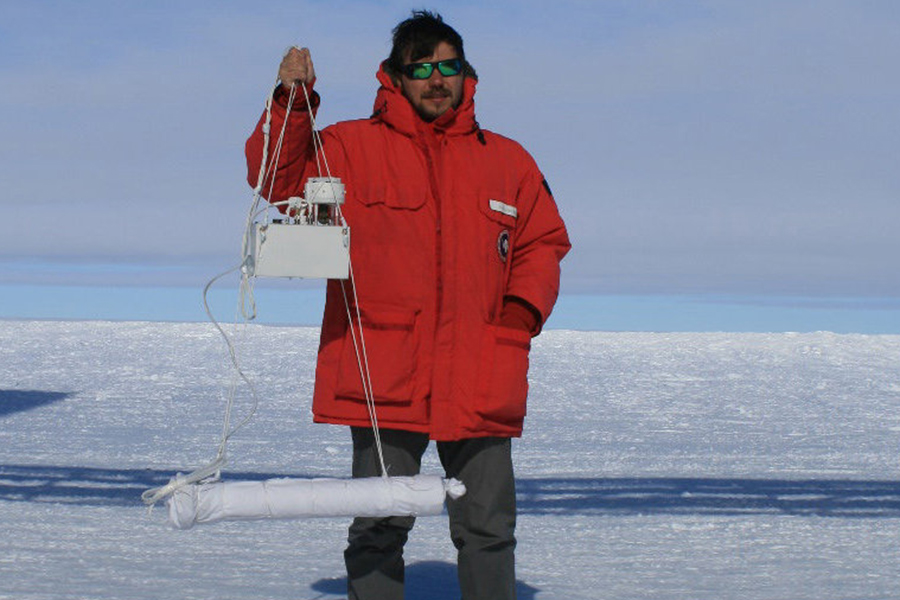The researcher of National Research Nuclear University MEPhI Alexander Novikov has told about why Russian scientists and their colleagues from NASA go to Antarctica each year and release unusual "balloons", and also shared his impressions about life on the South Pole.
In the footsteps of Jules Verne
Every few years scientists from the University of Hawaii, NASA, National Research Nuclear University MEPhI and many other research centers around the world go on unusual expedition to the Antarctic, to McMurdo station, where they do, seemingly, a very strange thing. They release aerostats filled with the most high-tech equipment in the cold polar air, and leave them to chance for the next few weeks.
Used by scientists “balloons” help to search for neutrinos of extremely high energies. These particles are traces of the most powerful explosions and cataclysms of the Universe, occurring in the centers of galaxies, surroundings of supermassive black holes, and other parts of the universe, the nature of which astronomers continue to argue about.
“In fact, our “balloons” cannot be described as something old and archaic. Modern balloons can maintain their altitude, climb and descend at different times of the day and make many other maneuvers. They differ from satellites in the fact that they can be run repeatedly, what significantly reduces the cost of observations,” explains the physicist.

Unit of radio aerials of the ANITA detector
In addition, the balloons, as the scientist noted, is able to transmit and receive more data than satellites and have several other advantages, thanks to which make the scientific team of the project ANITA to chose the “air legacy of the nineteenth century” as a basic platform for the operation of the detectors created in the United States and MEPhI.
American scientists have been involved in searching for ‘’ultra-high’’ neutrinos in the project ANITA (Antarctic Impulse Transient Antenna) for ten years, and they have not managed to find any such particle. This is not a problem yet: another project of this kind – a highland telescope of the Pierre Auger in Chile – has opened only two or three dozen space rays with super high energies over the decades of almost continuous operation. A “neighbor” of ANITA, a telescope IceCube at the South Pole, has managed to find only a few dozen neutrinos arriving on Earth from distant galaxies.
Unlike ordinary neutrinos produced by the Sun and other stars, neutrinos of ultra-high energies arise in the course of very unusual processes, including the decay of dark matter particles, the nature of which scientists are trying to uncover. A very low probability of registration of these particles, as noted by Novikov, forced physicists to turn the whole Antarctica into a giant detector of similiar neutrinos.
“The probability to register a particle depends on two parameters — detector area and how long it works. In our case, the role the detector is played by Antarctic ice. There are similar ground-based detectors — ARIANA and ARA. They can work all year long, but they record events at a very small distance. Our aerostat allows to see almost the whole continent and to record events that occur hundreds of kilometers away,” explains Novikov.
How does this natural detector work? Its action is based on a curious effect, predicted in 1962 by the Soviet physicist-theorist Gurgen Askaryan. He noted that high-energy neutrinos will "break" the laws of physics, flying through particularly dense materials that do not conduct electric current, such as ice or salt, in which the light moves slower than the particle itself.
As a rule, such "superluminal" particles motion usually generates light flashes — the so-called Vavilov-Cherenkov radiation. However, in the case of high-energy neutrinos, as Askarian thought, this process will generate beams of radio and microwaves with special properties. In the Antarctic, in addition to scientific bases, there is no radio waves sources, what allows scientists to find traces of neutrinos passing through the ice using a powerful radio antenna, similar to conventional radio telescopes.
The size of these antennas, during the expansion of the ANITA project, was steadily growing, and the current fourth version of the detector is an impressive battery of radios in height of seven meters and a weight of about a ton. A set of antennas, as Novikov explained, is raised by aerostat to an altitude of 37 kilometres, where he could survey almost the entire continent.
The first runs of this antenna showed that the perceived signals are hard enough to be recovered because the surface of Antarctica is not perfectly smooth.
An ingenious solution came from the Russian-American team of physicists led by David Besson, Professor of MEPhI and the University of Kansas. Conducting experiments with different sources of radio signals, the researchers unexpectedly came across a simple and cheap method of calibration and study of ice properties, which affect the radio signals received by the main ANITA detector.
It turns out that all the interference can be removed from the data by "shooting" the Antarctic surface by special periodic signal which is generated by the piezoelectric element, similar to those in lighters for gas cookers. This required the run of two more aerostats, which follow ANITA at a short distance and determine its azimuth position with the aid of photomultipliers, made in the MEPhI laboratory led by Besson.
Life in the Arctic Circle
The last session of ANITA was held in December last year and completed by the beginning of 2017, when the Russian and American scientists "shot off" ANITA from aerostats and pulled the detectors on parachutes to the ground. Having an expedition to the “ballons”, researchers removed the hard drives, leaving antenna, electronics and communication systems in place.
As Novikov explained, this is due to the fact that "balls" and antenna weigh a lot, it’s difficult to taking them to pieces, and you can take them out only by plane, which landing in terms of the coming polar night is an extremely difficult and dangerous task.
Scientists lay great hopes on a new dataset, which will probably contain the first hints that the Standard model of physics incorrectly describes the behavior of neutrinos of ultra-high energies, and will verify it.
"We have not processed all the data collected during the penultimate flight of aerostats yet. We have not managed to find high-energy neutrinos yet, but the detectors have recorded the passage of four different types of cosmic rays through the atmosphere. We hope that data from the expeditions of 2014 and 2016 will help us to find at least a few of these neutrinos, and test the Standard model,” Novikov says.
Their discovery, as the scientist added, will allow not only to start searching for the sources of these mysterious neutrinos, but actually will give to Earth a "free" and continuously operating particle accelerator, capable of accelerating them to speeds and energies that are far beyond the capabilities of the LHC and even future colliders.

Alexander Novikov is holding a part of the ANITA detector
Russian physicist plans to return to Antarctica in late November, where the ANITA scientific team will go into another expedition to the detectors and this time will evacuate them to the Mainland to prepare for the next flight. This seemingly simple process actually involves considerable difficulties and problems.
"Working in Antarctica with electronics is not very nice, and even dangerous, because there is almost zero humidity. And if you touch any metallic object, there is often a discharge of static electricity. You have to work with chips extremely carefully", the physicist said.
As he noted, weather conditions and cold had given him and his colleagues far less discomfort than static electricity during the launching of aerostats. However, they ready to go almost to the Pole again, where aerostats had landed and where the climatic conditions are most difficult.





